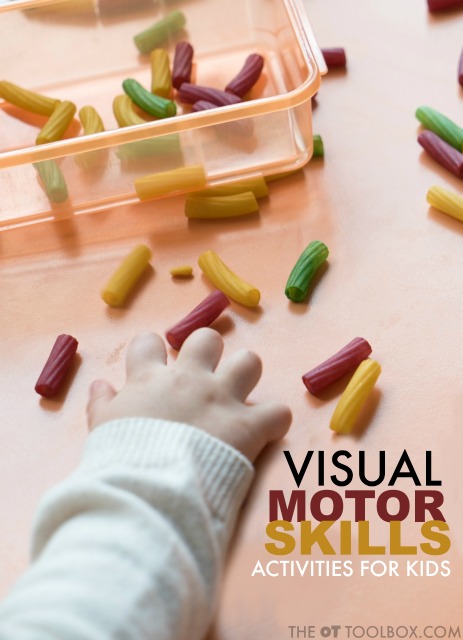
Visual processing makes up several areas that combine what we see with what we do. It encompasses allow us to take in visual information, process it, and use it to complete motor actions. Most of the time, this collection of information and interpretation happens without us even realizing it. Visual Processing is a big job, and includes three main areas that impact our ability to accomplish tasks: Visual Skills (including oculomotor skills and acuity), Visual Perceptual Skills (Using visual information to understand how objects around us are related to one another and to ourselves), and Visual Motor Skills (The integration of visual information with actions in order to complete tasks). Here, you will find resources, tips, and tools to address all these components of vision.
What do all these words mean?
Here, you find a huge resource on visual motor skills including information, visual motor activities, and tools to support visual motor skill development in kids. We have shared quite a few posts relating to vision and the integration of what the eyes see with motor movements. On this page, you will find a huge variety of visual motor activities for kids.
Read on to find out more about how visual perception, eye-hand coordination, and visual processing skills play a part in the overarching visual motor skill development so we can perceive and process visual information and use that information with motor skills to manipulate and move objects in tasks and activities.

Visual motor skills are essential to coordinated and efficient use of the hands and eyes. Visual motor integration is a skill we require for functioning. There is more that plays into the integration of visual motor skills into what we do and how we use our hands in activities.
Visual Motor Skills enable an individual to process information around them. The ability to observe, recognize, and use visual information about forms, shapes, figures, and objects makes up our visual motor abilities.
Visual motor skills include a coordination of visual information that is perceived and processed with motor skills, including fine motor, gross motor, and sensory motor.
Visual motor skills (and visual motor integration) are needed for coordinating the hands, legs, and the rest of the body’s movements with what the eyes perceive.
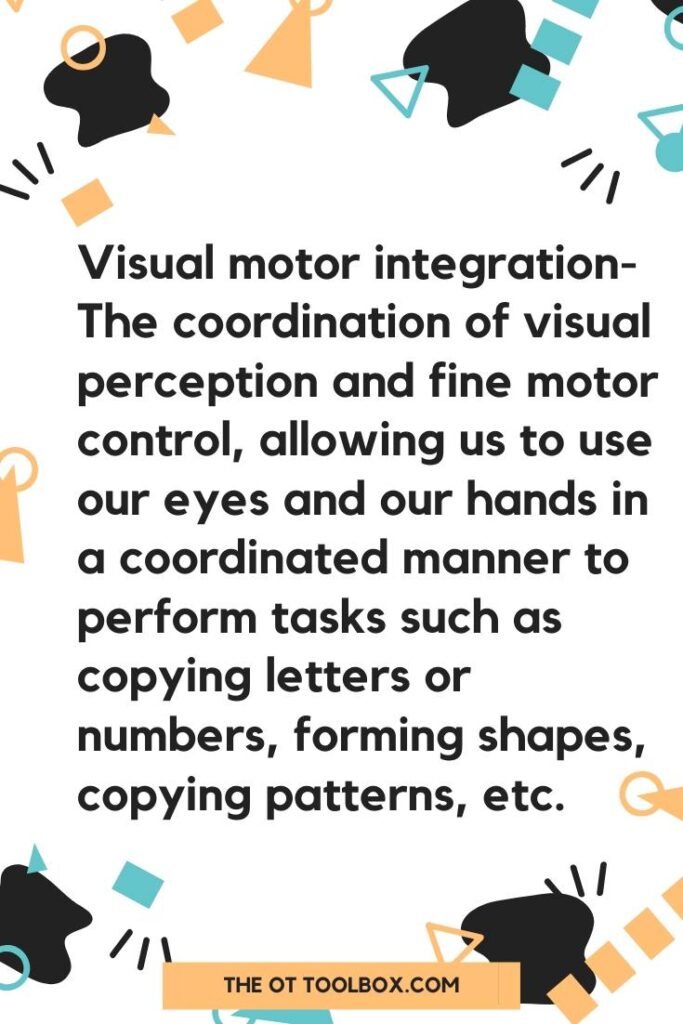
When a child performs activities involving motor tasks, they are using visual motor skills.
Visual motor skills are made up of several areas:
1. Visual Processing Skills- These skills include how the eyes move and collect information. These are visual skills that take in and use the information in order to process that input.
Visual skills include visual tracking, convergence, saccades, visual fixation, and visual attention. A component of visual processing includes visual efficiency. This refers to the effective use of that visual information.
2. Visual Perceptual Skills- Visual perception is our ability to make sense of what we see. Visual perceptual skills are essential for everything from navigating our world to reading, writing, and manipulating items. Visual perception is made up of a complex combination of various skills.
Visual perceptual skills include visual memory, visual closure, form constancy, visual spatial relations, visual discrimination, visual attention, visual sequential memory, and visual figure ground.
3. Eye-Hand Coordination- Using the visual input effectively and efficiently with the hands allows us to manipulate and manage objects and items. This coordinated motor skill requires fine motor skill development. These motor skills allow us to collect visual information and use it in a motor action. Eye-hand coordination requires fine motor dexterity, strength, shoulder stability, core stability, etc.
Examples of eye-hand coordination include catching a ball, manipulating pegs into a pegboard, lacing a lacing card, etc. Visual motor skills both require and utilize eye-hand coordination, however the overarching visual motor skills utilize additional components and are a higher level skill.
What if you suspect vision problems? When vision problems are suspected after a screening by the OT, it is best practice to refer the family to a developmental optometrist.
A developmental optometrist will complete a full evaluation and determine the need for corrective lenses, vision therapy or a home program to address vision concerns.
As occupational therapists, it is imperative that we rule out vision problems before treating handwriting or delays in visual motor integration, to ensure the best possible trajectory of development and success for the child.
Occupational Therapy Vision Screening Tool Occupational Therapists screen for visual problems in order to determine how they may impact functional tasks. Visual screening can occur in the classroom setting, in inpatient settings, in outpatient therapy, and in early intervention or home care.
This visual screening tool was created by an occupational therapist and provides information on visual terms, frequently asked questions regarding visual problems, a variety of visual screening techniques, and other tools that therapists will find valuable in visual screenings.
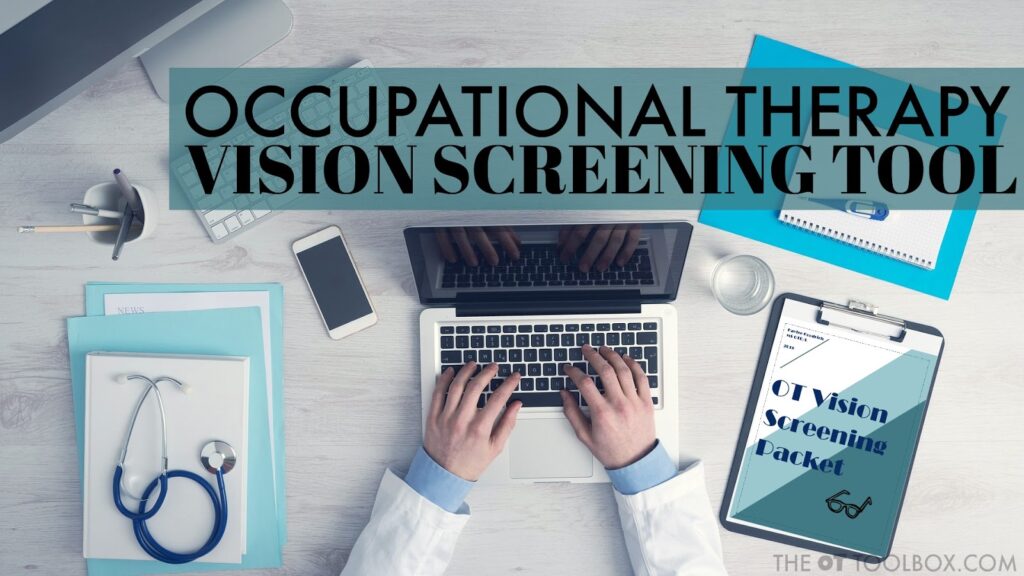
This is a digital file. Upon purchase, you will be able to download the 10 page file and print off to use over and over again in vision screenings and in educating therapists, teachers, parents, and other child advocates or caregivers.
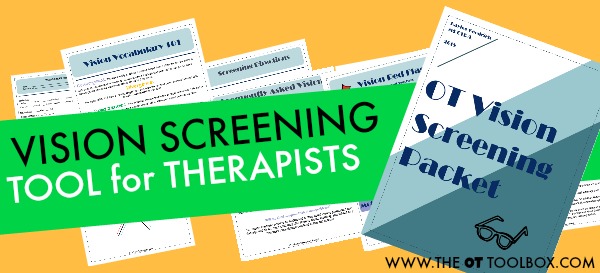
Visual perceptual skills make up an important component of visual motor skills. For children, these abilities are necessary for so many things…from self-care to fine motor skills, to gross motor skills…all parts of a child’s development require visual perception. There are many pieces to the giant term of “visual perception”.
There are many resources related to visual perceptual skills here on The OT Toolbox:
Search “Visual Perception” or individual visual perceptual skills in the search bar at the top of this website for more activities.
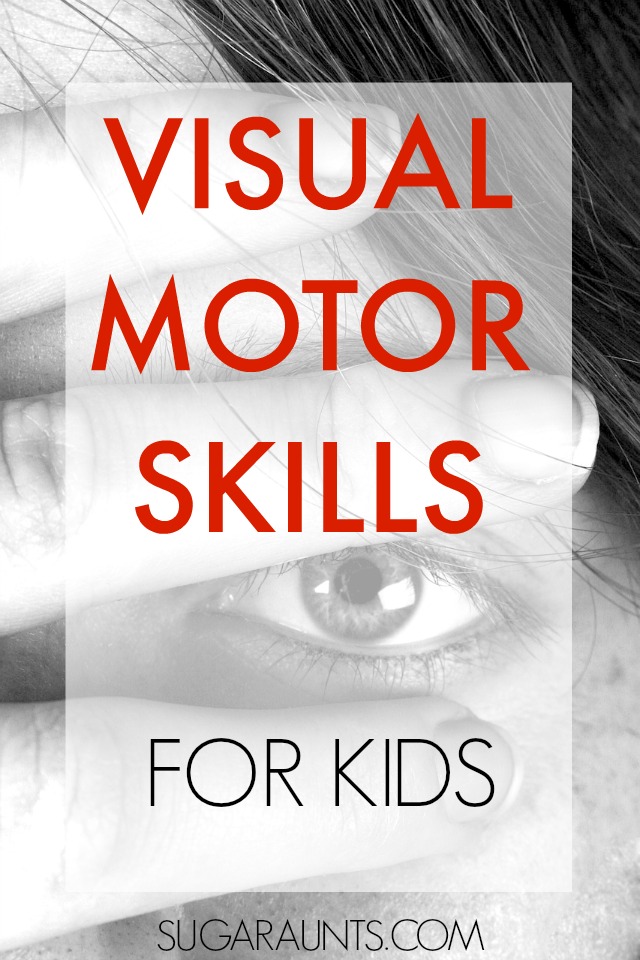
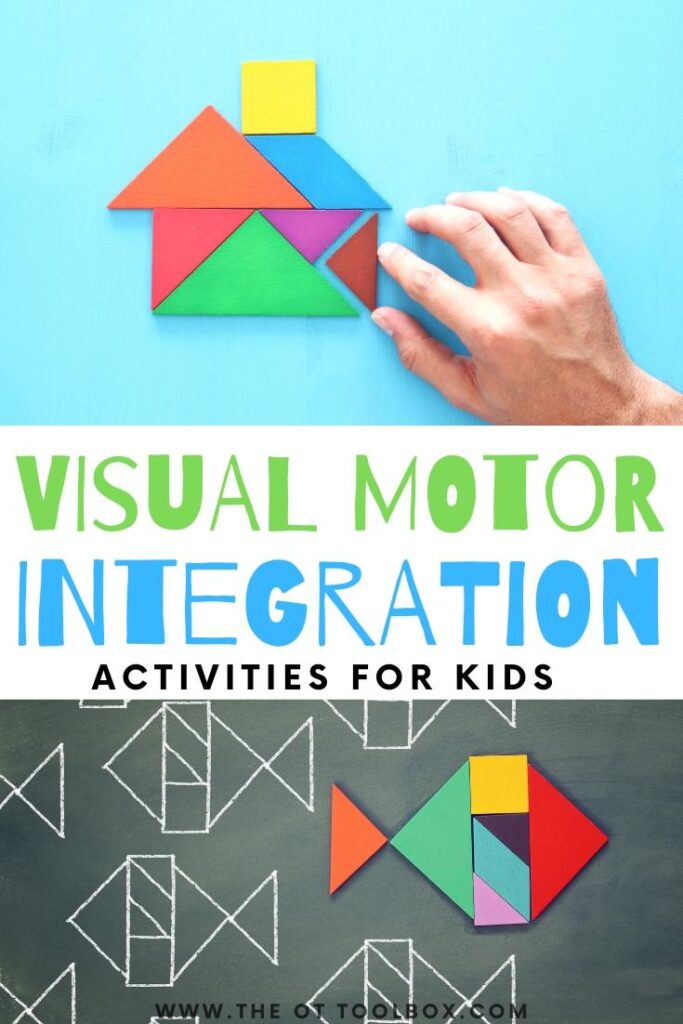
When it comes to vision, there is so much to learn! Start by checking out Visual Motor Integration developmental milestones for age-appropriate skills that children typically master from age 0-5.
Visual motor integration can be defined as the coordination of visual perception and fine motor control. visual motor integration allows us to use our eyes and our hands in a coordinated manner to perform tasks such as copying letters or numbers, forming shapes, copying patterns, or other tasks.
The activities below are designed to develop the ability to integrate and coordinate visual input with motor skills. I am breaking down the activities into different areas. Click on the main links to find even more explanation of each area.
These visual motor activities are powerful ways to work on various sub areas of visual processing that impact function, reading, handwriting, math skills, sports, and so much more.
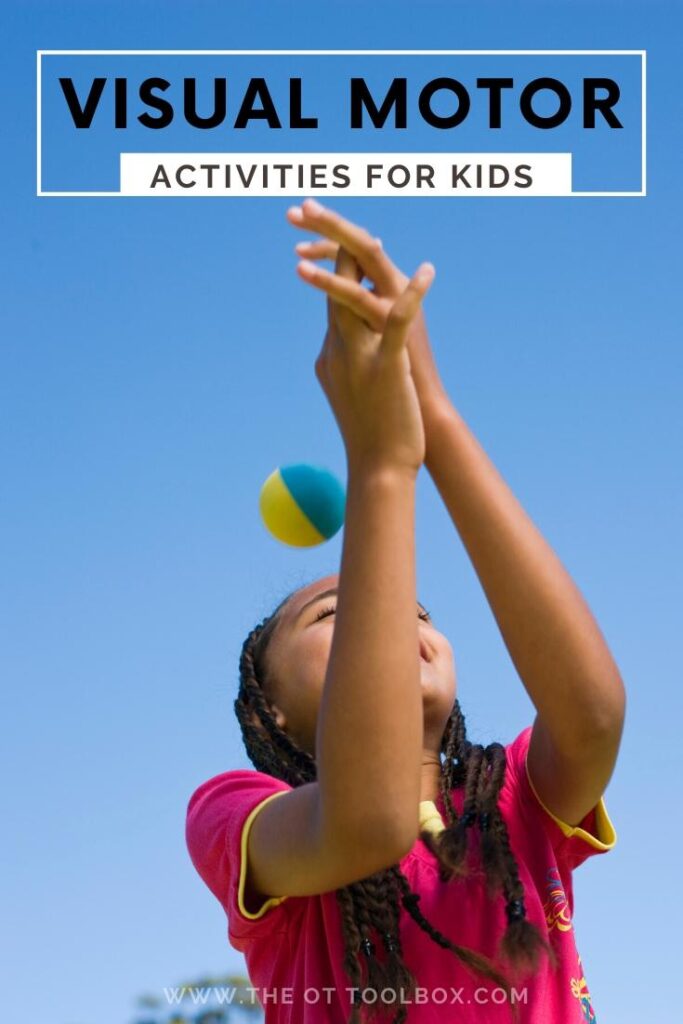
Hand-eye coordination is using the information received through the vision system to coordinate the hands with control, in order to complete a task, such as handwriting or catching a ball.
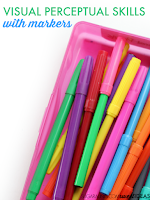
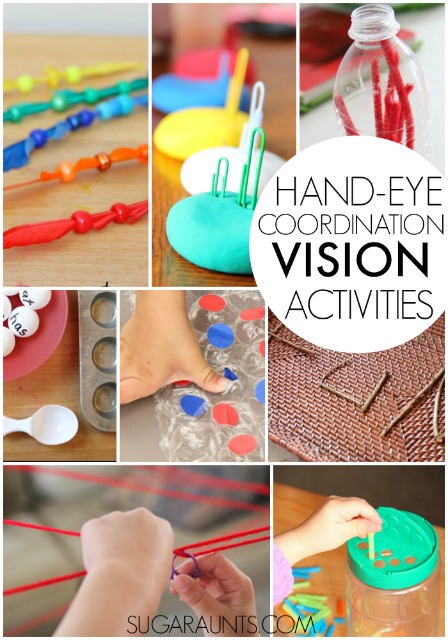
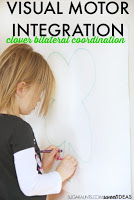

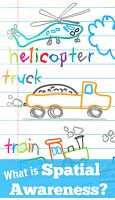
![]()
![]()

If you think your child or student might have some of these difficulties that lead to problems with handwriting, it can be quite beneficial to speak to an Occupational Therapist.
Join us in the free Visual Processing Lab…a virtual lab experience to learn all about visual processing and the parts that areas like visual motor skills, eye-hand coordination, and visual perception play in functional tasks. It’s a free mini-course and we would love to have you join in on the fun!
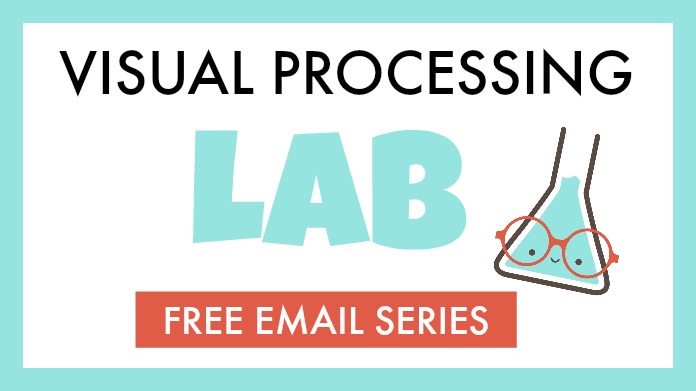
Visual scanning is essential for handwriting skills, puzzles, word searches, mazes, and many many functional tasks. Scanning a room for a missing sock may be difficult if a child demonstrates difficulty with visual scanning.
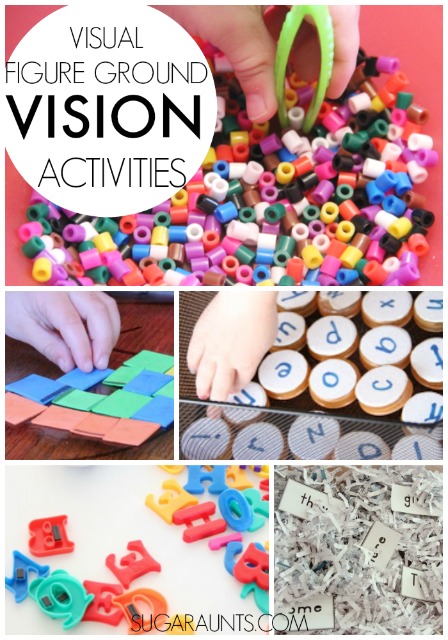
Visual Figure Ground is the ability to locate objects within a cluttered area (think “I Spy”). Finding a red square among the pile of foam pieces is one fun way to work on this area of visual perception.
Visual Closure is the ability to fill in parts of a form in the mind’s eye to determine shape or a whole object.
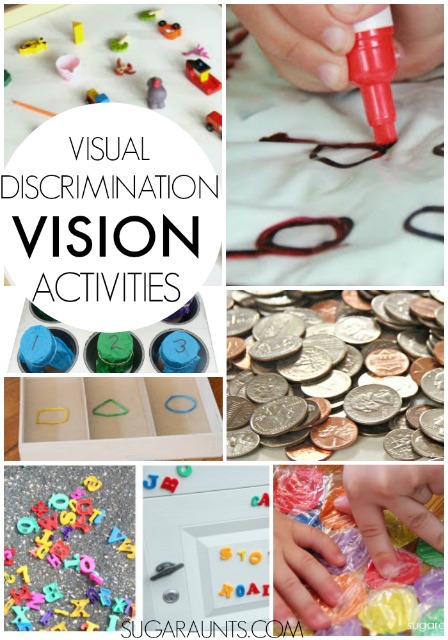
Visual Discrimination is determining differences in color, form, size, shape.
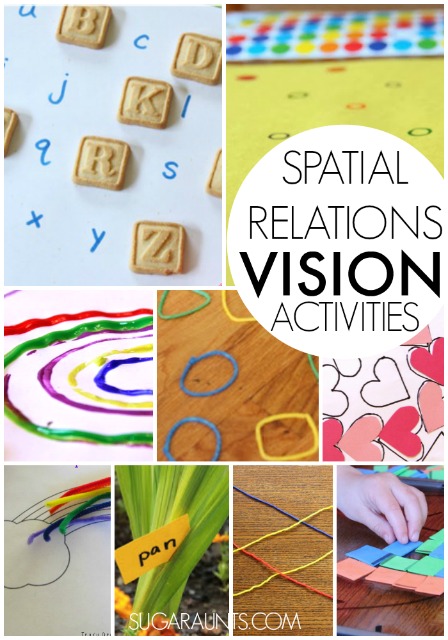
Visual Spatial Relations is organizing the body in relation to objects or spatial awareness. This is an important part of handwriting. Spacing pieces of a puzzle amongst the others and writing in relation to the lines is one way to work on this skill.